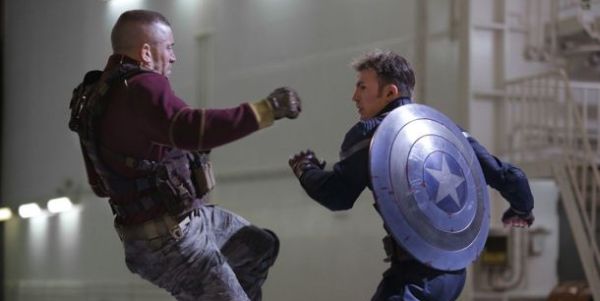Are Marvel The Masters Of Risk-Taking?

Based in the UK and currently embarking on postgraduate research…
Guardians of the Galaxy, the latest instalment in the Marvel cinematic universe, has just smashed box-office records on its way to being number one, raking in almost five times as much as its nearest competitor. It continues the highly successful “phase two” of the studio’s cinematic output which is timetabled until at least 2019. On the face of it, their films are among the safest bets in Hollywood – it is taken for granted that Marvel equals success. On closer inspection, however, it would appear that their recent releases have been full of risks. Do these bold choices make Marvel the masters of big-budget risk-taking, or should they revert to a “safer” type of film-making?
A Speculative Second Phase
Prior to its release, many people had labelled GOTG as the studio’s riskiest release so far, and there seemed to be plenty of evidence to support this skepticism. For starters, they were bankrolling a $170 million blockbuster based on a set of characters that were only teamed together in 2008 – there was none of the mainstream character nostalgia of Iron Man or Captain America to back this project up. Moreover, said team contained a talking raccoon, a tree-being and a mainly comedic actor who initially saw himself as “too fat” to truly convince in the role.
If this wasn’t enough, it was directed and co-written by James Gunn: a man whose main cinematic credits prior to this release comprised of Scooby-Doo and the poor-performing Super. This was a hugely expensive project revolving around largely unfamiliar characters and created by people largely untested in the genre. This could have become Marvel’s very own Catwoman, but instead it looks set to become a major hit.

For all the fuss made about GOTG, if you look closer at Marvel’s entire “phase two” you can see a similar level of boldness (or foolishness, depending on your opinion) virtually across the board. First off, Iron Man 3 was co-written and directed by Shane Black, an undoubtedly skilled film-maker but someone who had only directed one film (Kiss Kiss Bang Bang) prior to being handed $200 million and the control of the studio’s first release post-Avengers.
Not only that, but the film itself took the decision of drastically reworking the nature of the iconic villain Mandarin. This controversial twist away from the comic-book folklore was not well-received in some corners and could well have sunk the movie’s long-term fortunes. In reality the film became a massive hit, becoming the sixth highest-grossing cinematic release of all time as well as garnering a largely-positive public reaction.
Following hot on that film’s heels was Thor: The Dark World, probably Marvel’s least boundary-pushing picture but still one helmed by the talented but mainly-televisual Captain America: The Winter Soldier, another film that Marvel chose to entrust to a creative team that was both largely television-based and inexperienced in the genre.
More than that however, it was as much a political thriller as it was a superhero movie and one that (SPOILER ALERT) completely dismantled S.H.I.E.L.D. and as such threw the predicted future of the whole franchise off in a completely new and unexpected direction. Yet again, this potential stumbling block did nothing to stop Captain America: The Winter Soldier becoming the biggest release of 2014 so far.

At every turn, Marvel have reaped huge reward from taking potentially huge gambles with both their choices of creative staff and the wider repercussions their films have had on their cinematic universe. It should be said that a lot of big-budget releases carry risk. Even if you were to only look at releases from 2014, there have been films that placed heaps of both money and pressure in the hands of relatively unproven directors who weren’t afraid to make bold decisions – the best example being Gareth Edward’s Godzilla.
However, there is something about Marvel’s track record that is particularly eye-catching. Both in terms of the scale of their risk-taking and the extent to which unproven film-makers are given a shout, there is no other production studio that even comes close to them. Furthermore, while it has been particularly prominent during their “phase two”, it could be argued that Marvel has always been a risk-taking studio. After all, were there many people who initially thought Robert Downey Jr. was a safe bet for Iron Man?
Worth the Risk?
As much as bleeding-heart dreamers may wish for it not to be, the film industry is exactly that: a business that operates primarily to generate more money than it spends. Particularly since the financial catastrophe of Heaven’s Gate (a film which bankrupted the studio that backed it), there has been a move away from director-driven cinema and more towards executive and committee-driven film-making. On occasion, this greater attention to what the “people” (i.e. the largest possible market sector) want from a film has led to the creation of a poorly-received, box-office turkey.

However, it is undeniable that film companies are becoming increasingly financially reliant on movies that tick boxes rather than blow minds: sequels, prequels and ever-expanding franchises that, regardless of their quality, make the necessary millions to keep the businesses afloat. With this reality in place, is Marvel’s continuing decision to take risks a tactic they should stick with? One risk too many could be fatal. The lack of sufficient financial reward from film such as Green Lantern was enough to kill off a planned franchise. If Marvel make a risk that doesn’t pay off, could they be throwing their years of planned projects away with it? As such, should they revert to type and make more movies by the numbers?
In short, from whichever way you look at it, they shouldn’t change a thing. More than one media outlet has remarked on the fact that Marvel has never been more popular. Similar to the state of Pixar in the early 2000’s, Marvel has critical and commercial clout on its name alone, and so it could be said that they can afford to take these risks because, no matter what, they will still score big at the box office. However, this does both their creative output and their policy a disservice. After all, it is very possible that the risks are the reason that they have the clout in the first place. After the initial success of Iron Man, they proved that they could deliver widely-accessible and lucrative entertainment from unproven foundations.Since then, they have racked up triumph after triumph using this same formula of allowing fresh, inexperienced hands to bring their creations to life. Perhaps the reason they are so popular is that the risks during production add an added aura of excitement and intrigue that connects with their mass audiences.
Furthermore, one’s own bleeding heart cannot help but appreciate big-budget films that carry with them this persistent sense of raw ambition, experimentation and originality. Due to their winning combination of financial success and creative innovation, Marvel truly are the masters of cinematic risk-taking, and long may they continue breathing fresh life into the increasingly mechanical world of the multiplex.
Do you think Marvel take risks? If so, should they carry on? What are the biggest risks you think a big-budget film has ever taken?
Comment below – we’d love to hear your thoughts!
Does content like this matter to you?
Become a Member and support film journalism. Unlock access to all of Film Inquiry`s great articles. Join a community of like-minded readers who are passionate about cinema - get access to our private members Network, give back to independent filmmakers, and more.
Based in the UK and currently embarking on postgraduate research in Sheffield, Christopher has been writing prolifically about film for as long as it has taken him to alienate many old friends. Having previously written an award-winning column for a student newspaper, he is delighted to be a part of the excellent Film Inquiry team. He may love and analyse Inception a little too much, but he does have a broad appreciation of most things cinematic.










